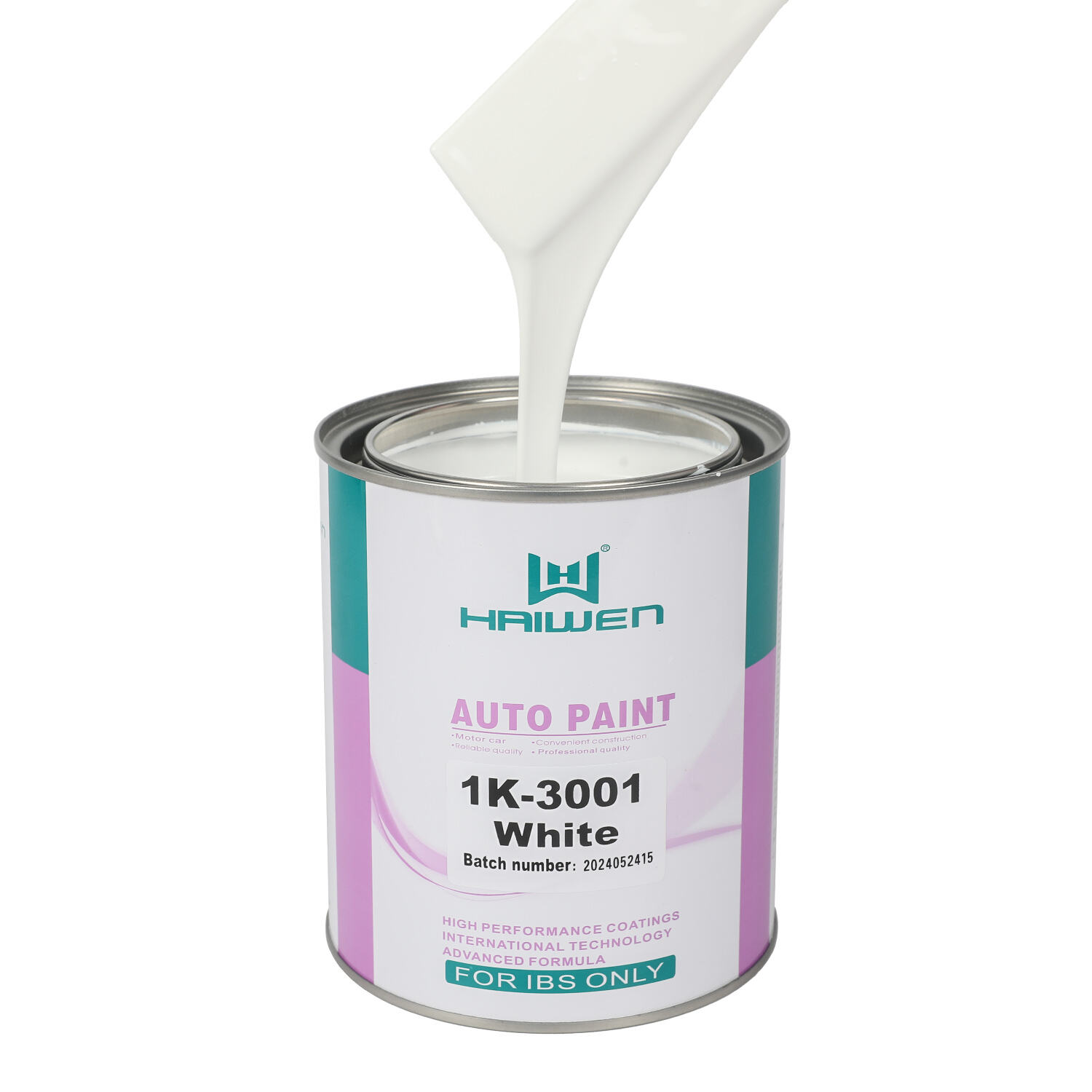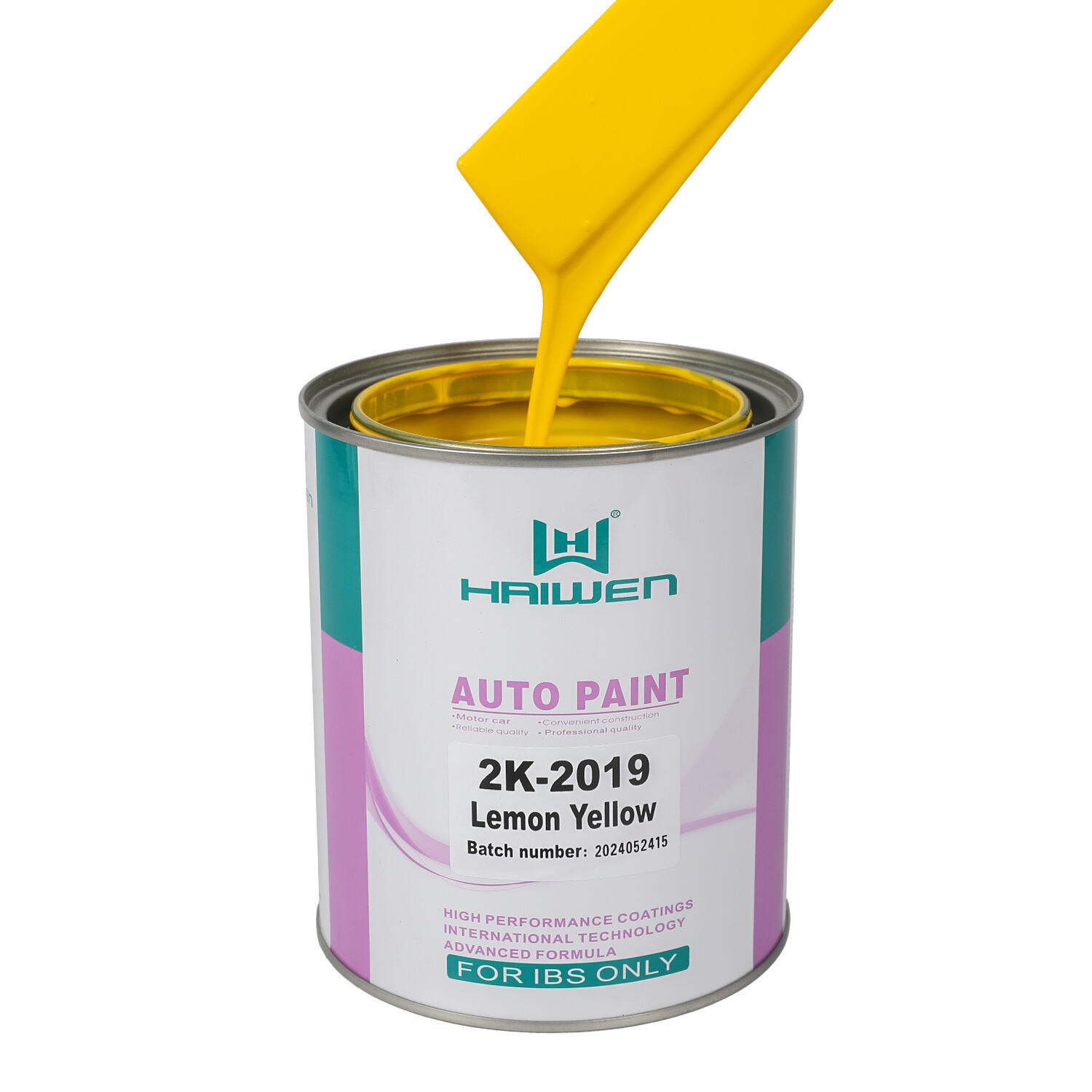Decoding the Fundamental Differences Between Paint Technologies
The choice between 1K paint systems and 2K paint systems represents one of the most critical decisions in surface coating projects. These two distinct technologies offer different performance characteristics, application requirements, and final results that can make or break a painting project. 1K paint systems, known as "one-component" formulations, cure through solvent evaporation and are typically easier to apply. In contrast, 2K paint systems, or "two-component" paints, undergo a chemical curing process that creates superior durability through cross-linking polymers. Automotive restorers, industrial finishers, and DIY enthusiasts must understand how these paint systems differ in terms of preparation, application complexity, drying times, and long-term performance. The decision between 1K paint systems and 2K paint systems ultimately depends on factors like project scope, environmental conditions, available equipment, and desired longevity of the finish.
Composition and Curing Mechanisms
Chemical Makeup of 1K Paint Systems
1K paint systems consist of pre-mixed formulations that require no additional hardeners or catalysts before application. These paints cure primarily through solvent evaporation, with the binder particles gradually coalescing as the carriers dissipate. Common examples of 1K paint systems include acrylic lacquers, enamel paints, and some aerosol spray paints. The simplicity of 1K paint systems makes them popular for quick touch-ups and projects where complex mixing isn't practical. Since 1K paint systems don't undergo chemical cross-linking, they remain soluble in their original solvent even after drying. This characteristic allows for easy blending and repair but limits their resistance to chemicals and environmental stressors. Many 1K paint systems contain additives that improve flow and leveling while maintaining reasonable durability for their intended applications.
Reactive Chemistry of 2K Paint Systems
2K paint systems involve a two-part composition that creates a chemical reaction when mixed, leading to permanent molecular cross-linking. The base component of 2K paint systems contains resins, while the hardener component provides isocyanates or other reactive agents that initiate curing. Once combined, 2K paint systems have a limited pot life before the chemical reaction makes the mixture unusable. This reactive process creates a three-dimensional polymer network that delivers exceptional hardness, chemical resistance, and durability. The cured film from 2K paint systems cannot be redissolved in its original solvent, making it more permanent than 1K alternatives. Automotive clear coats, industrial machinery finishes, and marine coatings frequently use 2K paint systems because of their robust performance characteristics. The chemical cross-linking in 2K paint systems continues for days or weeks after application, gradually reaching maximum hardness and durability.

Application Considerations and Techniques
Ease of Use with 1K Paint Systems
1K paint systems offer significant advantages in terms of simplicity and accessibility for occasional users. These paints don't require precise mixing ratios or concern about pot life, making them more forgiving for beginners. Application of 1K paint systems can be accomplished with basic equipment like aerosol cans or conventional spray guns without special cleaning considerations. The slower curing process of 1K paint systems allows for more working time to correct imperfections or achieve smooth blends. Touch-ups and repairs with 1K paint systems are straightforward since new layers can melt into previous coats. Many 1K paint systems are available in pre-mixed, ready-to-use formulations that eliminate mixing errors. The lower toxicity of most 1K paint systems reduces the need for extensive personal protective equipment compared to their 2K counterparts. These user-friendly characteristics make 1K paint systems ideal for small projects, hobbyists, and situations where professional spraying equipment isn't available.
Professional Requirements for 2K Paint Systems
2K paint systems demand more rigorous preparation and application protocols to achieve optimal results. The mixing process requires precise measurement of components, typically using graduated cups or digital scales for accuracy. Once activated, 2K paint systems have a limited working window before viscosity increases make proper application impossible. Application equipment for 2K paint systems must be thoroughly cleaned immediately after use before the paint cures in the gun. Proper ventilation and respiratory protection are essential when spraying 2K paint systems due to isocyanate content in many hardeners. The rapid cure time of 2K paint systems means technicians must work efficiently without the ability to rework areas after initial curing begins. Despite these challenges, 2K paint systems reward skilled applicators with superior flow characteristics and self-leveling properties that create show-quality finishes. Professional shops favor 2K paint systems for their efficiency - multiple coats can often be applied in quick succession without waiting for full drying between layers.
Performance and Durability Comparison
Longevity of 1K Paint Systems
1K paint systems provide adequate durability for many applications but can't match the permanent cure of 2K formulations. The solvent-reversible nature of 1K paint systems makes them more susceptible to damage from fuels, cleaners, and environmental contaminants. UV resistance varies widely among 1K paint systems, with some formulations requiring clear coat protection for extended outdoor use. Abrasion resistance in 1K paint systems is generally lower than 2K products, making them less suitable for high-traffic surfaces. However, modern 1K paint systems have improved significantly, with some hybrid formulations approaching the performance of basic 2K products. The flexibility of cured 1K paint systems can be advantageous for surfaces that experience vibration or thermal expansion. For indoor applications or projects where periodic touch-up is acceptable, 1K paint systems often provide sufficient performance without the complexity of 2K alternatives.
Extreme Durability of 2K Paint Systems
2K paint systems set the standard for durable finishes that withstand harsh conditions and heavy use. The cross-linked polymer matrix resists chemicals, abrasion, and UV degradation far better than 1K paint systems. Automotive applications benefit from 2K paint systems' ability to maintain gloss and color stability for years without polishing or protection. Industrial equipment finished with 2K paint systems withstands exposure to oils, solvents, and mechanical wear that would degrade 1K coatings. The hardness of fully cured 2K paint systems allows for aggressive polishing and compounding to maintain show-quality finishes. Marine environments particularly benefit from 2K paint systems' resistance to saltwater, humidity, and temperature fluctuations. Unlike 1K paint systems, properly applied 2K coatings typically don't require additional clear coat protection for most applications. The trade-off for this durability is permanence - mistakes in 2K paint systems are difficult to correct once cured, often requiring complete sanding and refinishing of affected areas.
Cost Analysis and Project Suitability
Budget Considerations for 1K Paint Systems
1K paint systems generally offer lower upfront costs and reduced equipment requirements compared to 2K alternatives. The absence of hardeners or activators in 1K paint systems simplifies inventory management for occasional users. Equipment cleaning is less critical with 1K paint systems since uncured material can often be flushed with solvent even after drying begins. Storage of 1K paint systems is more straightforward as they don't have components with limited shelf life once opened. For projects where ultimate durability isn't required, 1K paint systems provide acceptable results at a fraction of 2K system costs. The ability to purchase 1K paint systems in small quantities makes them economical for touch-ups and small-scale projects. However, the potentially shorter service life of 1K paint systems may lead to more frequent repainting, offsetting some of the initial savings over time.
Value Proposition of 2K Paint Systems
While 2K paint systems require greater initial investment, their longevity often makes them more cost-effective in the long run. The need for specialized equipment and safety gear with 2K paint systems adds to startup costs but pays dividends in finish quality. Professional applicators justify 2K paint systems' higher material costs through reduced labor for future maintenance and repairs. The coverage efficiency of 2K paint systems often exceeds 1K products, requiring fewer coats for complete hiding and protection. In commercial applications, the extended service intervals possible with 2K paint systems minimize operational downtime for refinishing. The resale value of vehicles and equipment finished with 2K paint systems typically remains higher due to their recognized superior durability. For high-value projects or surfaces that are difficult to access for repainting, 2K paint systems frequently prove to be the most economical choice despite their premium price.
FAQ
Can 1K paint systems be used over 2K paint systems?
While possible in some cases, applying 1K paint systems over 2K coatings requires specific preparation for proper adhesion. The non-porous nature of cured 2K paint systems necessitates thorough sanding and possibly an adhesion promoter. However, the reverse - applying 2K paint systems over properly prepared 1K coatings - typically works better due to 2K systems' superior bonding characteristics.
How do temperature and humidity affect these paint systems differently?
1K paint systems are generally more forgiving of environmental variations since they cure by evaporation rather than chemical reaction. 2K paint systems have stricter temperature and humidity requirements - cold slows the chemical cure while high humidity can cause surface defects. Both systems perform best within manufacturer-specified temperature ranges, but 2K paint systems are less tolerant of deviations.
What safety precautions differ between these systems?
2K paint systems require more stringent safety measures due to isocyanates in many hardeners - supplied-air respirators are often necessary. 1K paint systems still need proper ventilation but typically don't require the same level of respiratory protection. Skin contact with 2K paint system components also demands greater precaution due to potential sensitization risks.
Can beginners achieve professional results with 2K paint systems?
While challenging, novices can achieve good results with 2K paint systems by carefully following instructions and practicing first. The learning curve is steeper than with 1K paint systems due to mixing precision, pot life management, and application technique requirements. Many professionals recommend starting with smaller 2K projects before attempting large, visible surfaces.


